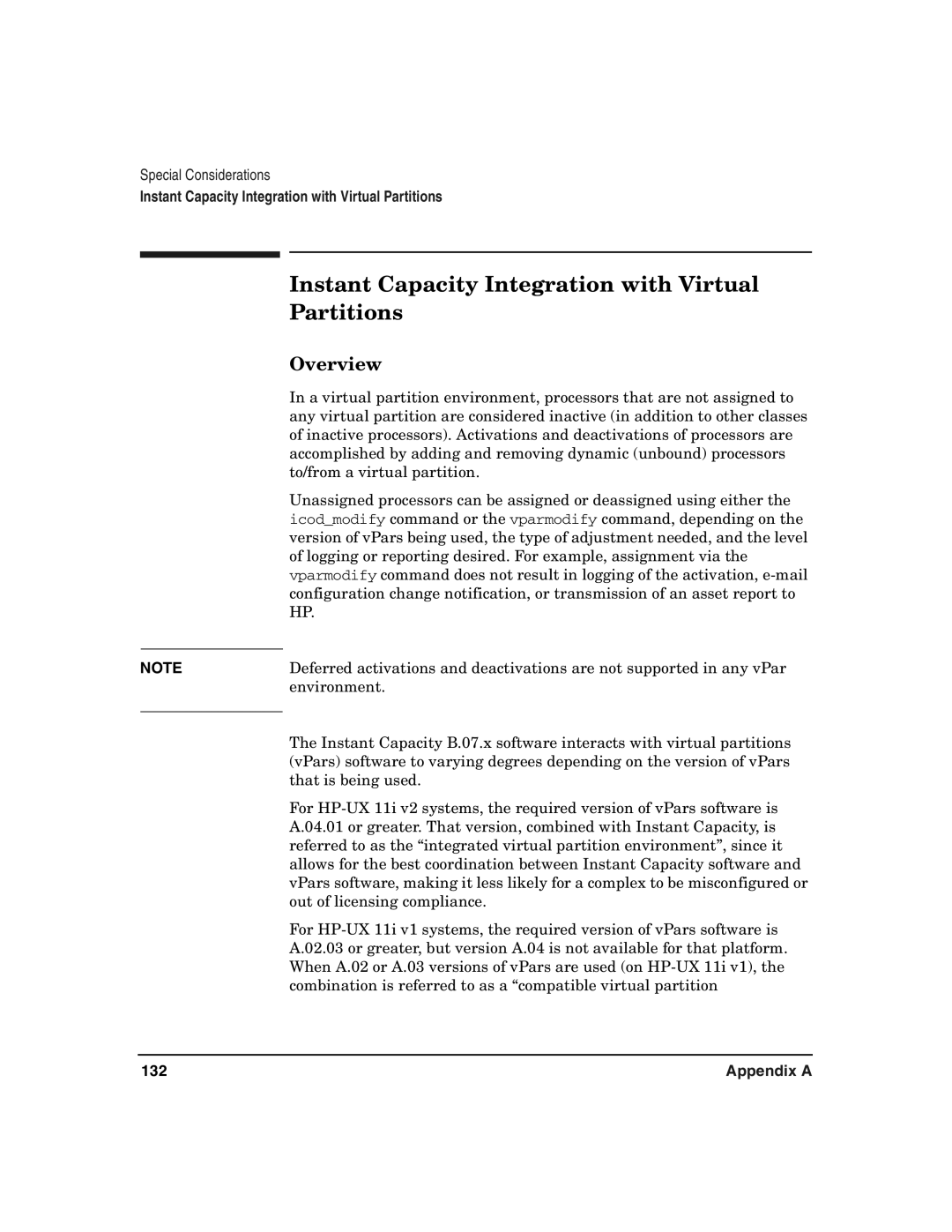
Special Considerations
Instant Capacity Integration with Virtual Partitions
NOTE
Instant Capacity Integration with Virtual Partitions
Overview
In a virtual partition environment, processors that are not assigned to any virtual partition are considered inactive (in addition to other classes of inactive processors). Activations and deactivations of processors are accomplished by adding and removing dynamic (unbound) processors to/from a virtual partition.
Unassigned processors can be assigned or deassigned using either the icod_modify command or the vparmodify command, depending on the version of vPars being used, the type of adjustment needed, and the level of logging or reporting desired. For example, assignment via the vparmodify command does not result in logging of the activation,
Deferred activations and deactivations are not supported in any vPar environment.
The Instant Capacity B.07.x software interacts with virtual partitions (vPars) software to varying degrees depending on the version of vPars that is being used.
For
For
132 | Appendix A |
